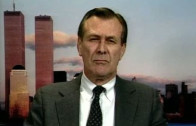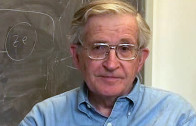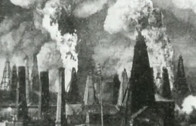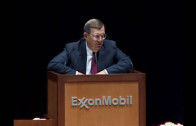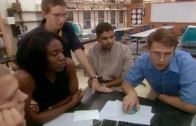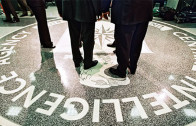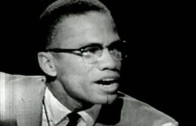The Power Principle
The Power Principle — Corporate Empire and The Rise of the National Security State
A series of films examining the history of the United States and the building of its empire with particular emphasis on the last seventy years of United States foreign policy. The methods that make empire possible are also examined—the politics of fear, the rise of public relations, the ‘Mafia Principle’ and the reoccurring use of fabled enemies, contrasting the Soviet Union and the Cold War alongside the parallels of today with the “War On Terror”. Not only does The Power Principle tie together historical events to revive a common thread, the series may also encourage viewers to reconsider their understanding of historical events and the portrayal of them, showing how those in power play a role in manipulating the collective memory through generations.
Series
Part one introduces the elements of the United States empire and reviews the relationship between the war machine, Wall Street, the military and the government. The interlocking relationships between weapons manufacturers and presidential appointees like Warren Christopher for instance, clearly point to the direct connections between war, economics and empire. Other examples of how corporations run the United States are also detailed: Kermit Roosevelt’s role in overthrowing Mohammed Mossadegh in Iran, the merger of state and corporate power in Guatemala, economic neocolonialism in the Congo, the “Mafia Doctrine” in Grenada, Chile and elsewhere, the friendly relations between bankers like Prescott Bush and the Nazi regime in Germany; the hiring of certain Nazis after World War II by the United States, the re-installation of fascists into government in Italy and Greece after the war to prevent the rise of the communists; and so on.
Part two shows how power elites use propaganda and the manipulation of media and information for social control. The episode explains the concept of ‘self-deception, blowback and shifting rationales’ as part of the propaganda mindset, making examples of techniques used to manipulate popular opinion, which also serve to mask covert operations and secret military projects such as events in El Salvador, Nicaragua and Haiti. The episode also details the NSC-68 agreement which was a top-secret plan to quadruple defence spending from 1950, and embark on an elaborate propaganda campaign to convince the public to support future costly developments as part of the Cold War. President Truman orders the development of the hydrogen bomb. After this, NATO is purposed to maintain and expand the growing US empire. Case Studies: The Pentagon as a Keynsian economic Mechanism; Fear-based conditioning — The War of the Worlds, Television: The perfect propaganda medium; Soviet vs. American propaganda; Hollywood and the Pentagon; Psywarriors and the media; Operation Mockingbird; The Pentagon Pundits; Project Revere; The Bomber Gap.
This last episode provides an overview of the United States empire post-Cold War, in the expanded age of nuclear weapons with the continued campaign of Mutually Assured Destruction. The Soviet Union has collapsed, and nothing has changed as far as the military-industrial complex is concerned, while the agreement between the two political parties in the United States over empire is stronger than ever before, meaning there is literally no difference in the way US foreign policy is conducted regardless of whoever ‘wins’ the White House. Additionally, the presence of the US military in civilian life has never been greater. This final episode details terrorist attacks planned and enacted by the United States against Cuba and elsewhere, showing methods of biological and chemical warfare, the Cuban Missile Crisis; while also detailing the efforts of people such as Vasili Arkhipov and Stanislav Petrov who averted catastrophic nuclear war on separate occasions. NATO is expanded. What about the future? Case Studies: Yugoslavia, Libya; the Yeltsin coup, etc.
